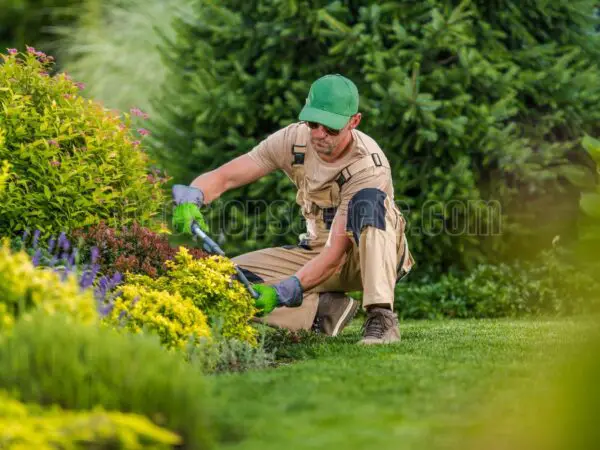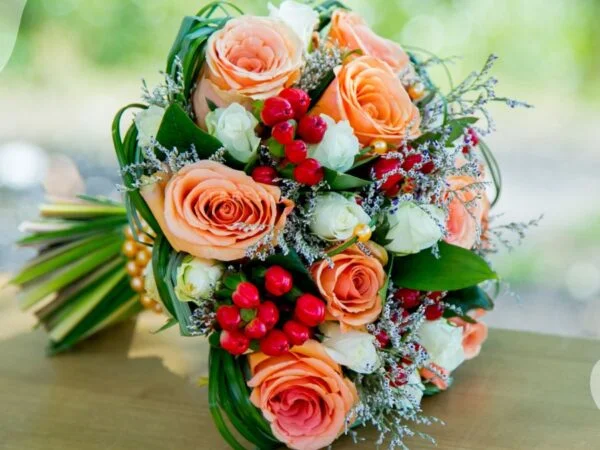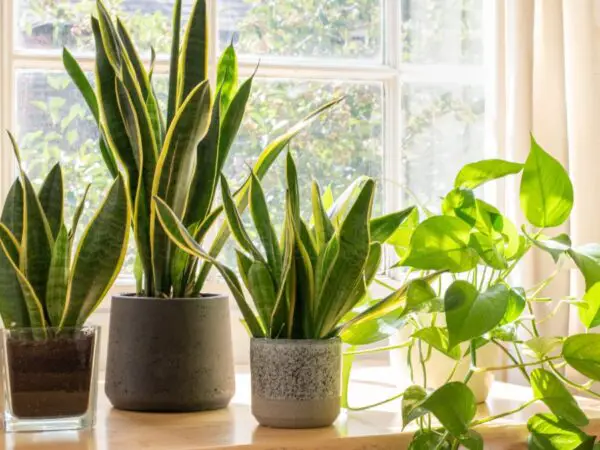Bonsai trees have a rich history that dates back over a thousand years. These miniature trees originated in China and became popular in Japan, symbolizing harmony and balance. Caring for a bonsai tree is both an art and a science. It requires patience, skill, and knowledge to keep these tiny wonders thriving.
Understanding how to look after a bonsai tree involves mastering watering techniques, pruning methods, and choosing the right soil. Proper sunlight exposure and pest management also play crucial roles in their health. This guide will provide essential tips and tricks to help you nurture your bonsai tree successfully. Dive into the world of bonsai care and experience the joy of cultivating these beautiful living sculptures.
Key Takeaways
-
To care for your bonsai tree, regularly check its watering needs, ensuring the soil remains moist but not soggy.
-
Use high-quality bonsai soil and fertilize your tree during the growing season to promote healthy growth.
-
Prune and shape your bonsai regularly to maintain its desired form and encourage new growth.
-
Repot your bonsai every couple of years to refresh the soil and provide more room for root development.
-
Stay vigilant against common pests and diseases by inspecting your tree and treating any issues promptly.
-
Choose a bonsai species that fits your environment and skill level to ensure a rewarding growing experience.
Understanding Bonsai Trees
What Bonsai Means
Bonsai is a Japanese term meaning "planted in a container." The practice began in China over a thousand years ago and later spread to Japan. Bonsai embodies a philosophy of harmony with nature. It encourages gardeners to connect with their surroundings.
Creating miniature trees represents more than just gardening. It is an art form that demands patience and skill. Many people use Bonsai as a form of meditation. The act of shaping and caring for these trees offers peace and focus.
Types of Bonsai Trees
Several popular types of Bonsai trees exist, each with unique characteristics. Some common varieties include:
-
Ficus: Known for its resilience and adaptability.
-
Juniper: Features beautiful foliage and is easy to train.
-
Maple: Offers stunning fall colors and delicate leaves.
Choosing the right species matters greatly. Factors like climate and care needs play a role in this decision. Different species also affect styling techniques. For instance, Junipers often require different pruning methods than Maples.
Indoor vs Outdoor Bonsai
Indoor and outdoor Bonsai trees have distinct care requirements. Indoor trees need protection from extreme temperatures. They often thrive in stable environments with controlled humidity.
Outdoor Bonsai benefit from natural sunlight and seasonal changes. These trees can adapt to varying weather conditions. However, they may need shelter during harsh winters or intense heat.
Environmental factors influence the choice between indoor and outdoor Bonsai. Light availability is crucial for both types. Indoor Bonsai require bright, indirect light to stay healthy. Outdoor trees can handle direct sunlight but need shade during peak hours.
Essential Care Tips
Ideal Positioning
Bonsai trees thrive in specific locations. They need plenty of light, so placing them near a window is ideal. A south-facing window often provides the best exposure.
Temperature and humidity also play a crucial role. Most Bonsai prefer temperatures between 60°F and 75°F. Humidity levels should be moderate. Too much heat or dryness can stress the tree.
Outdoor Bonsai require protection from harsh weather. Strong winds and heavy rain can damage leaves and branches. During extreme conditions, bring them indoors or provide shelter.
Watering Needs
Watering frequency varies by species. Tropical Bonsai may need daily watering, while others might only need it every few days. Always check the soil moisture before watering.
Signs of overwatering include yellowing leaves and root rot. Underwatered trees show dry, crispy leaves and stunted growth. Adjust your watering routine based on these signs.
Pot size and soil type impact watering needs significantly. Smaller pots dry out faster than larger ones. Well-draining soil helps prevent overwatering issues.
Light Requirements
Different Bonsai species have unique light needs. For example, Ficus prefers bright indirect light, while Juniper thrives in full sun. Knowing your species is key to proper care.
Inadequate light leads to weak growth and leaf drop. Trees may become leggy as they stretch for more light. This can affect their overall health and appearance.
Adjust light exposure with changing seasons. In winter, reduce direct sunlight to prevent leaf burn. Use sheer curtains or move the tree to a less sunny spot if necessary.
Soil and Fertilization
Best Soil Mixes
An ideal soil mix for Bonsai trees includes organic matter, drainage materials, and aerating agents. Common components are akadama, pumice, and lava rock. These materials ensure proper drainage and aeration. Good drainage prevents root rot, while aeration allows roots to breathe.
l composition can vary based on the species of tree. For example, conifers may prefer a mix that retains moisture. Deciduous trees often need more drainage. Understanding the specific needs of each tree helps in selecting the right soil mix.
Fertilizing Schedule
Bonsai trees require a consistent fertilization schedule throughout the year. In spring and summer, fertilize every two to four weeks. During fall, reduce feeding to once a month. In winter, most trees need little to no fertilizer.
Organic fertilizers release nutrients slowly. They improve soil health over time. Synthetic fertilizers provide quick nutrient boosts but can harm soil life if used excessively. Adjusting the type of fertilizer depends on the growth stage of the tree. Young trees need more nitrogen for growth, while mature trees benefit from balanced nutrients.
Nutrient Needs
Healthy Bonsai growth relies on essential nutrients like nitrogen, phosphorus, and potassium. Nitrogen supports leaf growth, phosphorus encourages root development, and potassium aids overall plant health. A lack of these nutrients can lead to visible issues.
Nutrient deficiencies manifest in various ways. Yellow leaves may indicate nitrogen deficiency. Dark spots could point to a lack of potassium. Seasonal changes also affect nutrient needs. Trees growing actively in spring require more nutrients than during dormancy in winter.
Pruning and Shaping
Basic Pruning Techniques
Pruning is essential for maintaining the shape of a bonsai tree. Start by using sharp, clean tools like scissors or pruning shears. This prevents damage and infection. The best time to prune is during the growing season, typically in spring and summer.
Pruning encourages new growth by removing older branches. It also helps keep the tree small. Focus on cutting back new shoots to maintain the desired shape. Remove unwanted branches that disrupt the tree's balance. Regular pruning keeps your bonsai healthy and visually appealing.
Wiring Methods
Wiring shapes bonsai trees into specific styles. This technique allows you to bend branches into desired positions. Use aluminum or copper wire for this purpose. It's easy to manipulate without harming the tree.
Apply wire gently around branches. Avoid wrapping too tightly, as this can cause damage. Check the wired branches regularly to ensure they are not being constricted. Remove the wire after a few months to prevent scarring. Different wiring techniques can create various styles, such as cascading or upright forms.
Seasonal Pruning
Seasonal pruning is crucial for bonsai care. The best times for this are early spring and late summer. Trees grow differently with each season. Spring brings new growth, while late summer prepares them for dormancy.
Understanding seasonal changes helps in adapting pruning techniques. For example, cut back more aggressively in spring when growth is strong. In contrast, prune lightly in late summer to avoid stressing the tree before winter.
Adapting your approach based on seasonal growth cycles ensures a healthy bonsai tree. This method promotes better health and maintains its miniature size.
Repotting Your Bonsai
When to Repot
Signs of needing repotting include roots growing out of the drainage holes. A tree may also show stunted growth or yellowing leaves. These indicate that the roots are cramped and need more space.
The best time to repot varies by species. For most deciduous trees, spring is ideal as they enter their growing phase. Conifers should be repotted in late winter to early spring before new growth starts. Repotting helps maintain root health and improves overall tree vitality. Healthy roots support strong growth and better nutrient absorption.
Step-by-Step Guide
Repotting a Bonsai requires careful preparation. First, gather your tools: a new pot, fresh soil mix, and pruning shears.
-
Remove the Bonsai from its current pot.
-
Gently loosen the root ball with your hands.
-
Trim any long or damaged roots with pruning shears.
-
Prepare the new pot with a layer of soil at the bottom.
-
Place the Bonsai in the center of the pot.
-
Fill around the roots with fresh soil, ensuring no air pockets remain.
-
Water thoroughly to settle the soil.
Preparing the new pot is crucial for success. Use a well-draining soil mix tailored for Bonsai trees. This supports healthy root development and prevents waterlogging.
After repotting, care is vital for recovery. Keep the tree in a shaded area for a few weeks to reduce stress.
Post-Repotting Care
Essential practices after repotting include monitoring moisture levels closely. The soil should remain moist but not soggy. Overwatering can lead to root rot, while underwatering can cause stress.
Protecting the tree from shock is important during recovery. Avoid direct sunlight initially and provide some wind protection if outdoors. Gradually reintroduce it to its normal environment once it shows signs of stability.
Common Pests and Diseases
Identifying Pests
Bonsai trees can face various pests. Aphids, spider mites, and whiteflies are common offenders. Aphids cause curling leaves. Spider mites leave tiny webs and yellow spots on leaves. Whiteflies appear as small white insects under the leaves.
Preventing pests starts with good care. Keep your bonsai healthy and well-watered. Regularly inspect your tree for signs of pests. Check the undersides of leaves and around the trunk. Early detection is key to managing infestations.
Disease Prevention
Bonsai trees are also vulnerable to diseases. Root rot often occurs from overwatering. Leaf spot disease can develop from poor air circulation or wet leaves. Fungal infections thrive in damp environments.
Proper care is essential in preventing these issues. Ensure your bonsai has adequate drainage. Water only when the soil feels dry. Avoid crowding your plants to improve airflow around them. This reduces humidity, which helps prevent fungal growth.
Creating a healthy environment matters too. Place your bonsai in a location with plenty of sunlight. Monitor temperature and humidity levels regularly. An optimal environment keeps your tree strong against diseases.
Treatment Options
Effective treatment options exist for pests and diseases. For aphids, insecticidal soap works well. Neem oil is effective against spider mites and whiteflies. For root rot, remove affected roots and repot the tree in fresh soil.
Timely intervention is crucial for saving affected bonsai trees. Once you notice a problem, act quickly to treat it. Delaying treatment can lead to more severe damage or even death of the tree.
Using treatments safely is important too. Organic options like neem oil are less harmful to beneficial insects. Chemical treatments should be used according to package instructions. Always test any treatment on a small area first.
Popular Bonsai Species
Ficus Bonsai
Ficus Bonsai trees require specific care to thrive. They prefer bright, indirect light. These trees need well-draining soil and regular watering. Allow the top inch of soil to dry out between waterings. Ficus is popular among beginners due to its resilience. It adapts well to indoor conditions and can tolerate neglect.
Styling a Ficus tree involves careful pruning. Cut back new growth to encourage branching. Use sharp, clean tools to avoid damaging the plant. Regular trimming helps maintain its shape and size. This species responds well to wiring, which allows for creative designs.
Juniper Bonsai
Juniper Bonsai trees thrive in outdoor settings. They need full sun for at least six hours a day. Well-drained soil is essential for healthy roots. Water these trees when the topsoil feels dry.
Styling techniques for Juniper vary by species. The most common method is called "clip and grow." This technique involves trimming new growth while allowing some branches to elongate. Wiring is also effective but must be done carefully to prevent damage.
Common challenges include pests like spider mites and aphids. These pests can weaken the tree if not controlled. Overwatering can lead to root rot, a serious concern for Juniper Bonsai.
Maple Bonsai
Several Maple varieties are ideal for Bonsai cultivation. Japanese Maple and Trident Maple are popular choices. These species offer stunning seasonal color changes, providing aesthetic appeal throughout the year.
In spring, Maples display vibrant greens, while autumn brings fiery reds and oranges. This transformation adds beauty to any garden or indoor space.
Pruning is crucial for Maple Bonsai health. Trim branches during the growing season to maintain shape. Watering needs vary; keep the soil consistently moist but not soggy. Check regularly for signs of dryness, especially during hot weather.
Growing and Cultivating
Starting from Seeds
Starting a Bonsai tree from seeds requires careful attention. First, choose high-quality seeds from a reputable source. Soak the seeds in water for 24 hours to help with germination.
Next, plant them in a seed tray filled with a well-draining soil mix. Keep the soil moist but not soggy. Germination can take several weeks to months, depending on the species. Patience is essential during this time.
Once seedlings appear, provide them with adequate light. A sunny windowsill or grow lights works well. As they grow, thin out weaker seedlings to allow stronger ones to thrive. Care for seedlings involves regular watering and monitoring their growth until they are ready for styling.
Propagation Methods
Bonsai trees can be propagated using several methods. These include seed propagation, cuttings, layering, and grafting.
-
Seed Propagation: This method takes time but allows for genetic diversity.
-
Cuttings: Taking cuttings from established trees is quick and effective. It usually results in faster growth but may require more care.
-
Layering: This technique involves rooting a branch while it is still attached to the parent tree. It’s reliable but needs patience.
-
Grafting: Grafting combines two plants into one. It can produce unique results but requires skill.
Each method has its pros and cons. Seed propagation provides variety but takes longer. Cuttings are faster but might not retain the same characteristics as the parent tree. Choose the best method based on how quickly you want results and the type of tree desired.
Growth Stages
Bonsai trees go through several distinct growth stages:
-
Seedling Stage: Young trees need gentle care and stable conditions.
-
Juvenile Stage: Trees grow rapidly and require more water and nutrients.
-
Mature Stage: Growth slows down, and maintenance becomes crucial.
-
Old Stage: Trees show character and complexity but need special attention.
As a Bonsai matures, care requirements change significantly. Younger trees often need more frequent watering and nutrient supply. Mature trees might require less water but more precise pruning and wiring techniques.
Monitoring these growth stages is vital for effective maintenance. Proper care ensures that each stage supports healthy development.
Closing Thoughts
Caring for a bonsai tree is an art that requires attention and dedication. By understanding the essentials, from soil to pruning, you can nurture a thriving miniature masterpiece. Keep an eye on pests and diseases to ensure your bonsai stays healthy and vibrant. Each species has its quirks, so choose one that fits your lifestyle and preferences.
Ready to take your bonsai journey to the next level? Dive into your care routine and watch your tree flourish. Share your progress with fellow enthusiasts or ask for tips; the bonsai community is always eager to help. Start today, and let your bonsai thrive!
Frequently Asked Questions
How often should I water my bonsai tree?
Water your bonsai tree when the topsoil feels dry. This typically means watering every few days, but it may vary based on species, pot size, and climate.
What type of soil is best for bonsai trees?
Use a well-draining soil mix specifically designed for bonsai. It should retain moisture while allowing excess water to escape easily.
How do I prune my bonsai tree?
Prune during the growing season to maintain shape and health. Use sharp scissors to clip back new growth and remove any dead or diseased branches.
When should I repot my bonsai tree?
Repot your bonsai every 1-3 years, depending on its growth rate. Spring is the best time, just before the growing season starts.
What are common pests affecting bonsai trees?
Common pests include aphids, spider mites, and scale insects. Regularly inspect your tree and treat infestations promptly with insecticidal soap or neem oil.
Which bonsai species are easiest for beginners?
Beginner-friendly species include Ficus, Juniper, and Chinese Elm. These varieties are resilient and adapt well to indoor conditions.
Can I grow a bonsai tree indoors?
Yes, many bonsai trees thrive indoors. Choose species like Ficus or Jade that can tolerate lower light conditions and ensure proper care for optimal growth.
Image Source: Paid image from CANVA




